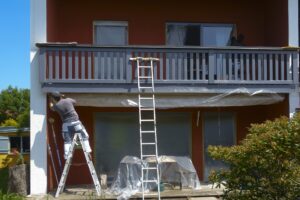Table of Content
A temporary fix, waterproof paint typically lasts between six to twenty-four months. Can water creep up the basement’s concrete floor? Most specialists consider waterproof paints to be a temporary fix for their issue. They are inappropriate for basement walls and will probably fail in a year or two. A primer and crack injection will typically last for ten years or so.
Waterproof paint might be the ideal short-term solution for peeling and flaking paint on your musty, humid basement walls. However, that doesn’t mean you should apply some paint and move on because these indicate a more serious moisture issue that waterproof paint won’t be able to fix permanently.
When properly applied, waterproofing properties must last at least ten years, if not longer. The product’s lifespan might increase when a professional completes the waterproofing process. Water will be kept from the house when used in conjunction with outside ground levelling and excavation processes, and the waterproofing material will likely last even longer. Basic waterproofing membranes must survive for at least ten years, but they can last much longer with the correct choice and conditions.

paint exterior
On the other hand, subpar waterproofing will rarely hold up over time. In moist places, waterproof paint will only last six months to two years. You must deal with the source of moisture if you want a lasting solution. How long you can go without adding waterproofing again depends on the kind of waterproofing you pick and how the solution is applied.
The quantity of waterproofing product used, the weather, and the extent of the initial damage are some variables that affect how long the waterproofing will last. Seal the inside of the walls with premium waterproof paint if the foil test reveals that water is permeating the basement walls and leaving them moist. The secret to a long-lasting waterproofing system is good craftsmanship and sound tactical decisions, not a combination of waterproofing materials. Each one contributes in this way to your waterproofing solution and the actions you must take to guarantee your waterproofing lasts for decades.
Waterproof Paint Types
There are numerous varieties of waterproof paints, each with a different level of durability and intended use. Here are a few typical kinds.
- Masonry Paint: Made from ceramic elements, latex-based masonry waterproofing paint has water- and mildew-resistance properties. It may also be cleaned using soap and water and is made to stick to brick and concrete.
- Epoxy Paint: This paint immediately hardens into a robust, watertight seal thanks to epoxy, a plastic compound. Although it can be used on stone, metal, concrete, and cement surfaces, as well as the basement or garage flooring, it is most frequently used for boats and (at home) water tanks.
- Acrolein Elasticized Paint: Acrolein, a highly toxic toxin, transforms into a waterproof substance that stops mould, mildew, and bacteria that love moisture from growing on concrete when combined with acrylic paint. Use caution when using this paint and adhere to any of the safety precautions listed on your product’s label.
Membrane’s quality matters
Each waterproofing membrane has unique qualities that make them suitable for particular applications.
Membranes must be waterproof and strong enough to endure natural building movement, chemicals, and harsh climates. They must be appropriate for a specific building region, such as a moist basement, open balcony, or flat roof.
The previous membrane must be taken out, a new one must be laid down, and any necessary repair work, such as carpentry or tiling, must be finished. It can be very pricey. Furthermore, if you don’t have the correct product, you might have to start over in 10 years.
An inexpensive item may last 10 to 15 years. Although a high-quality PVC membrane may cost a third more, it has great long-term advantages because it can last up to 60 years.

Can waterproof paint be sealed?
Acrylic paint also needs to be protected to stop moisture from penetrating because it is not waterproof. Using additives and sealants also has the added benefit of increasing the endurance of the surface and preventing colour fading.
Should basement walls be painted with waterproofing paint?
Waterproof paints and coatings will quickly bubble and flake off the basement walls, making a mess. It’s difficult to remove once applied. Because our professionals at Basement Systems see issues like these frequently, we do not advise using this line of items in your house.
Conventional care for long-term waterproofing
Once you’ve installed a high-quality waterproofing solution, you want it to endure. And for that reason, you shouldn’t disregard it after project handoff.
Extreme storms, birds nibbling at membranes, accidents during other trades’ work, and other environmental conditions can all disastrously affect your waterproofing.
With a preventative maintenance programme, we will regularly inspect your membrane and produce a report if we find any places that need remediation. If we notice a minor issue that requires immediate attention, we’ll fix it immediately.
Another significant advantage of preventative maintenance is how it affects your warranty. Suppliers may void a guarantee if you don’t follow simple instructions to maintain the condition of your membrane. However, if you retain the waterproofing on your membrane, they might even lengthen your warranty—and occasionally by years.

